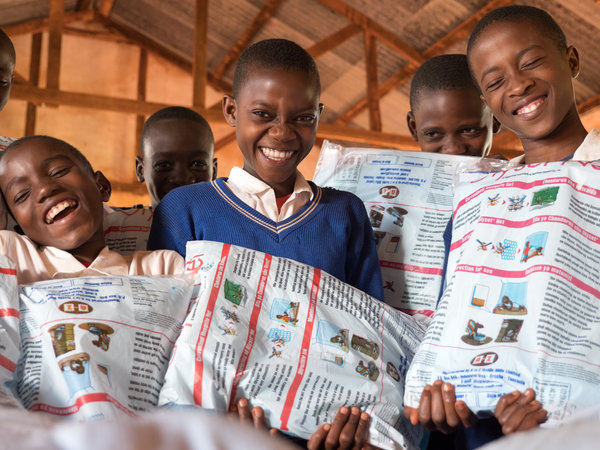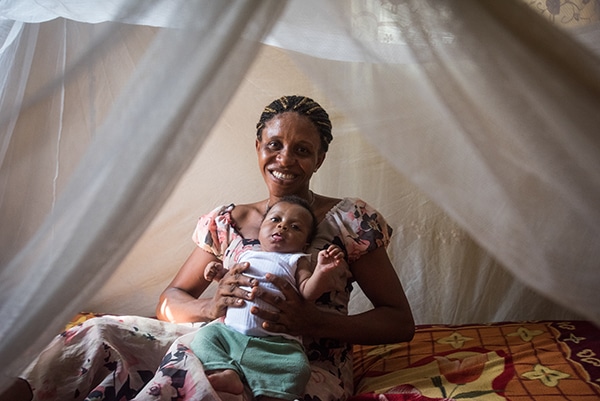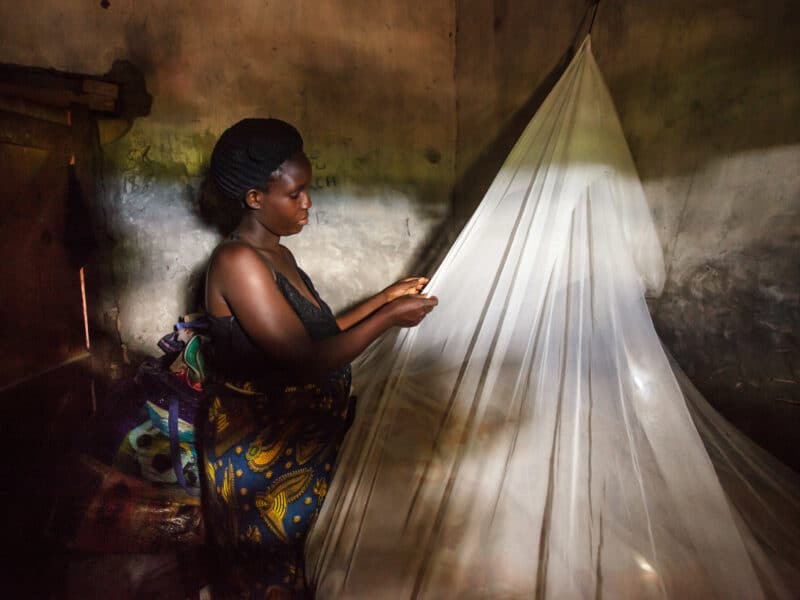Insecticide-treated bed nets – a crucial part of malaria protection throughout sub-Saharan Africa and regions of Asia – have long been distributed to people who need them through mass campaigns conducted every three years.
But what if there were a more effective way to cover more people with bed nets designed to protect them from being bitten by malaria-infected mosquitoes? Better yet, what if those nets could be distributed at a lower cost and with fewer of the logistical headaches associated with mass campaigns?
Those were the questions that the government of Tanzania asked Johns Hopkins Center for Communication Programs’ Hannah Koenker and others in 2011. They met with officials, community members and other stakeholders. A health economist from Tulane University modeled different options, with cost and operational considerations in mind. What they came up with was a plan to distribute nets annually to children in schools to supplement the regular distribution of nets to pregnant women and infants at health facilities instead of mass campaigns.
The plan worked.
With support from the U.S. President’s Malaria Initiative through USAID and the Swiss Agency for Development and Cooperation, Tanzania has delivered 2.5 million nets to schoolchildren in three southern regions since 2013: Lindi, Mtwara and Ruvuma. According to recently released results from the 2017 Tanzania Malaria Indicator Survey, more than 70 percent of people in those regions had an insecticide-treated net to sleep under in 2017, a rate that has been maintained steadily since the program began. And Koenker, who heads PMI’s VectorWorks project, says this was done by distributing a million fewer nets than a mass distribution campaign would have entailed, a significant increase in efficiency. VectorWorks, which is led by CCP, implements the program in support of the Tanzanian government.
“The idea of replacing mass campaigns with yearly school net distributions was pretty revolutionary, frankly. It hadn’t ever been tried on such a large scale,” she says. “What we found in Tanzania is that school-based net distribution has proven to be an innovation that streamlines the net delivery process and makes nets accessible to more people in a cost-effective way. You need careful planning to make the switchover to school distribution but Tanzania shows that it can work.”
As the school-based program has matured, the distribution of nets has been integrated with a government education database that collects enrollment figures, simplifying the process and ensuring more accurate counts of students and of nets delivered.
Following the success in the south, Tanzania scaled up school distribution to 11 other high-burden regions in 2016. The program is now in its third year distributing nets in schools in 14 regions of the country, supplementing distribution channels that have long been in place at health facilities where prenatal care and vaccinations are provided. With PMI funding, VectorWorks has also assisted with similar school programs in Ghana, Guinea and Mozambique.
“Since we now have evidence that school-based distribution works, our efforts have been in improving operational efficiency and reducing costs,” says Waziri Nyoni, who leads VectorWorks activities in the Tanzania country office. “Fewer of our staff members are now needed to run school-based distribution, we deliver the nets and everyone knows what needs to be done.”
Insecticide-treated bed nets are a critically important malaria control tool. An estimated 663 million cases of malaria have been averted in sub-Saharan Africa since 2001. The World Health Organization says an estimated 69 percent of that decline was due to the availability and use of insecticide-treated mosquito nets.
Mass distribution campaigns are usually done every three years – though they tend to take an entire year or more to complete – and take a huge amount of effort to coordinate. If nets are lost or wear out between campaigns, however, there is often no way for people to obtain new ones. They have to wait until the next cycle.
In the school-based system, nets are usually distributed to half the classes, which allows a household’s children to receive nets at primary school every other year. One of the keys to success there, Koenker says, is that the schools and the government coordinate to ensure accurate student enrollment counts – and subsequent delivery of the right number of nets. If a family has multiple children, they may get multiple nets. A social and behavior change communication campaign encourages Tanzanians with extra nets to give them to family and friends who may need them.
In Tanzania where the new system has been implemented, between the nets given to pregnant women and infants at health clinics and school-based distribution, nets reach two-thirds of households. But those households encompass 85 percent of the population.
“You may be missing some families that don’t have school-aged children, but that doesn’t appear to be effecting the overall access to nets,” she says. “We are seeing better results with school-based distribution. It’s really working.”





